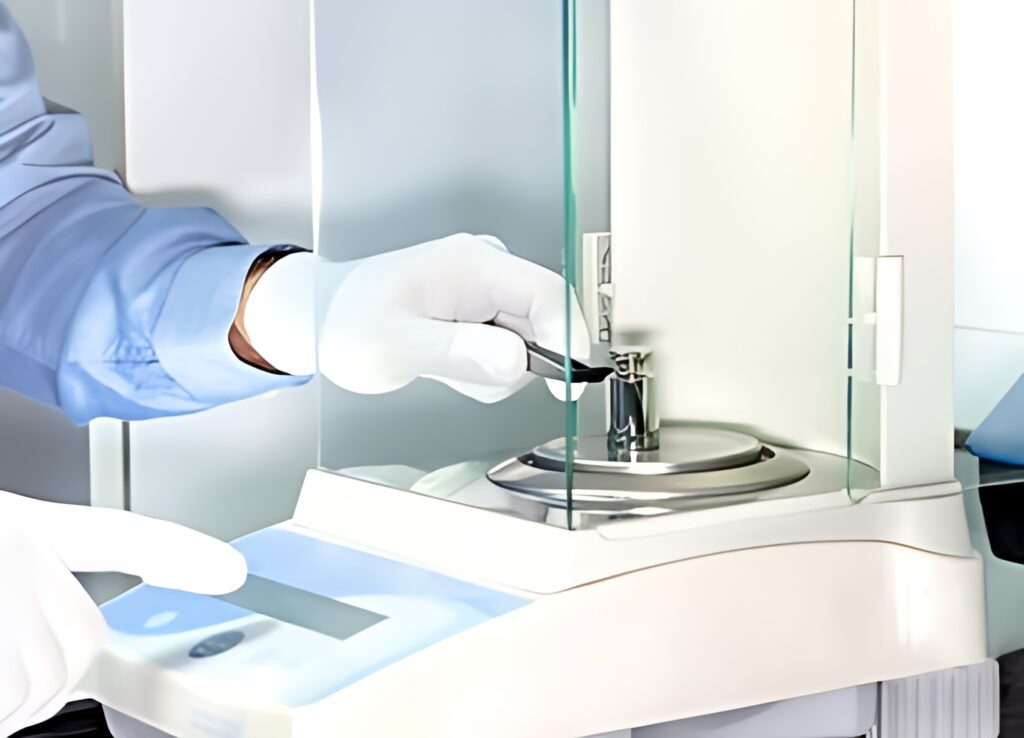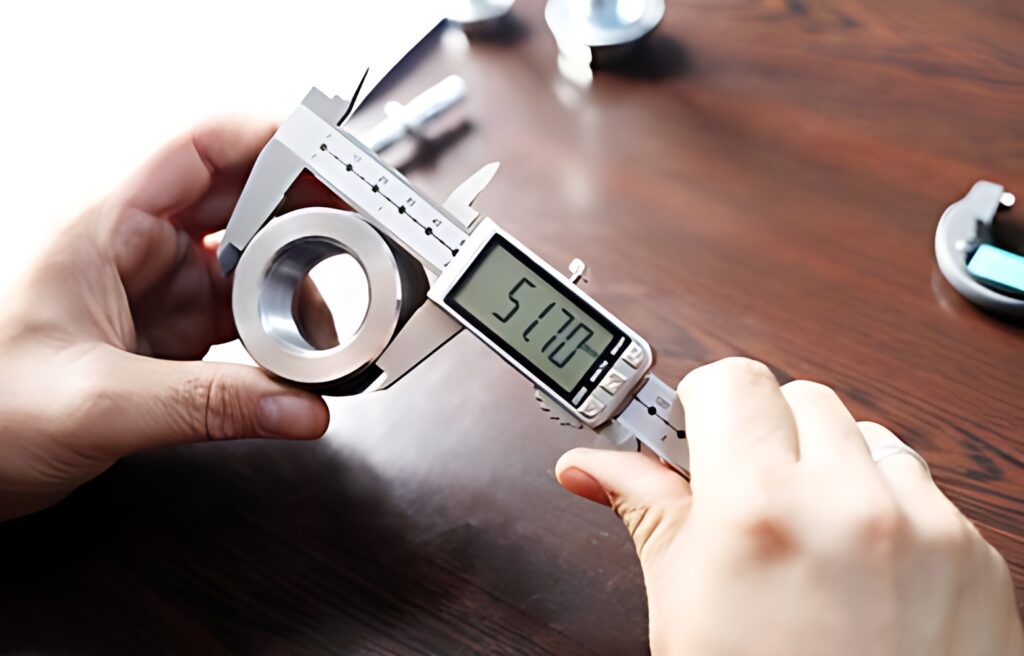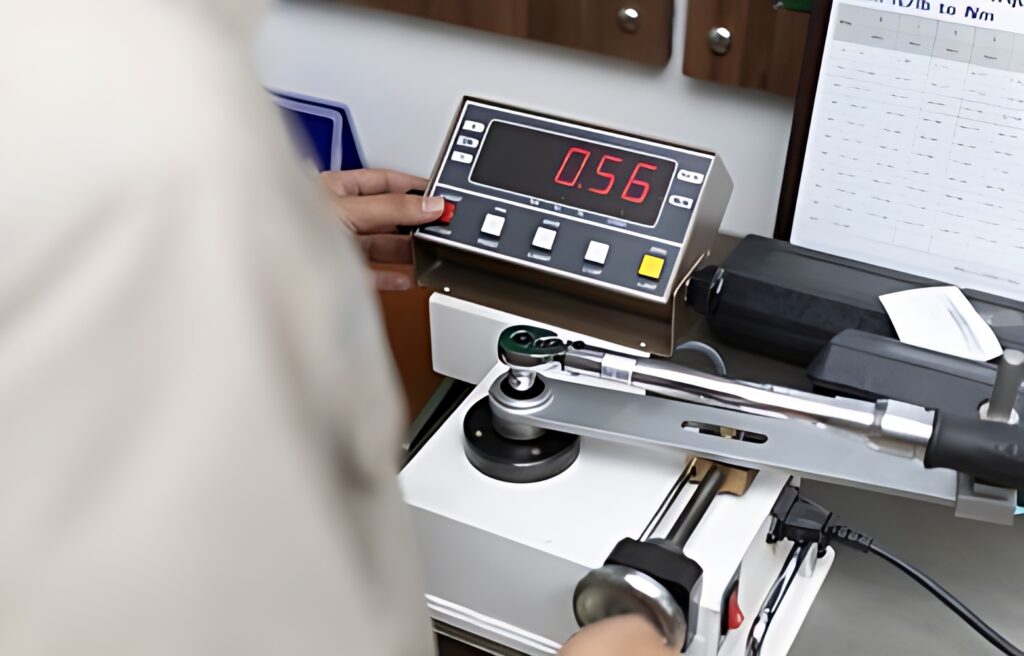Mass
Mass calibration is the process of verifying and adjusting, if necessary, the accuracy of mass measurement instruments and equipment, such as weighing scales, balances, and mass standards.
Accurate mass measurements are crucial in various fields, including pharmaceuticals, food production, manufacturing, scientific research, and quality control. Mass calibration ensures that these instruments provide reliable and precise mass readings.

Here are the key steps involved in mass calibration:
- Selection of Calibration Standards: Choose appropriate calibration standards, often known as mass standards or weights, that have known and traceable accuracy to a recognized metrology institute. These standards serve as reference masses for the calibration process.
- Calibration Environment: Set up a controlled and stable environment for the calibration procedure. This includes controlling temperature, humidity, and other environmental factors that may affect mass measurements.
- Instrument Preparation: Inspect and prepare the mass measurement instrument (e.g., balance or scale) to be calibrated. Ensure that it is clean, level, and free from any obstructions.
- Zero Calibration: Perform a zero calibration, which involves ensuring that the instrument reads zero when no mass is placed on the weighing pan. This is often referred to as taring.
- Calibration Weights: Place the calibration weights of known masses on the instrument’s weighing pan. Record the instrument’s readings for each weight applied.
- Data Collection: Collect data during the calibration process, including the reference mass values and the instrument’s readings. Record any necessary corrections or adjustments made during the process.
- Data Analysis: Analyze the collected data to assess the accuracy and precision of the mass measurement instrument. Calculate errors, uncertainties, and deviations from the reference mass values.
- Adjustment or Correction: If the instrument does not meet the desired accuracy specifications, adjustments or corrections may be necessary. This could involve modifying the instrument’s settings or applying calibration factors.
- Re-Calibration and Iteration: Repeat the calibration process if adjustments are made to ensure that the instrument now meets the required accuracy. Calibration may need to be iterated until the desired accuracy is achieved.
- Documentation: Thoroughly document all aspects of the calibration process, including the calibration weights used, test conditions, results, adjustments made, and any uncertainties associated with the measurements.
- Calibration Certificate: Issue a calibration certificate that summarizes the calibration process and results. This certificate may be required for regulatory compliance or quality assurance purposes.
- Regular Calibration: Mass measurement instruments should be regularly calibrated to ensure ongoing accuracy. The frequency of calibration depends on factors such as the type of instrument, industry standards, and the specific application.
Mass calibration is critical for ensuring product quality, compliance with regulatory standards, and accurate measurements in various industries. Accurate mass measurements are essential for controlling processes, manufacturing consistent products, and meeting quality control requirements. Regular calibration helps prevent measurement errors that could lead to production issues or compliance problems.
Dimension
Dimensional calibration, also known as metrology or dimensional metrology, is the process of verifying and ensuring the accuracy and precision of measuring instruments and tools used to assess physical dimensions such as length, width, height, and other geometrical parameters.
Dimensional calibration is critical in industries such as manufacturing, engineering, construction, aerospace, automotive, and quality control to ensure that products meet specified tolerances and standards.

Here are the key steps involved in dimensional calibration:
- Selection of Calibration Standards: Choose appropriate calibration standards or artifacts that have known and traceable dimensions, often certified by a recognized metrology institute. These standards serve as reference dimensions for the calibration process.
- Calibration Environment: Create a controlled and stable environment for the calibration procedure, including maintaining consistent temperature, humidity, and other environmental factors that may affect measurements.
- Instrument Preparation: Inspect and prepare the measuring instruments and tools to be calibrated. Ensure that they are clean, well-maintained, and in proper working condition.
- Zero or Origin Calibration: If applicable, perform a zero or origin calibration to ensure that the measuring instrument reads zero or its reference point correctly when no measurement is being taken.
- Calibration Measurements: Use the calibration standards or artifacts to measure specific dimensions with the instruments being calibrated. Record the measurements provided by the instruments and compare them to the known reference dimensions.
- Data Collection: Collect data during the calibration process, including the reference dimensions and the instrument’s readings. Record any necessary corrections or adjustments made during the process.
- Data Analysis: Analyze the collected data to assess the accuracy and precision of the measuring instruments. Calculate errors, uncertainties, and deviations from the reference dimensions.
- Adjustment or Correction: If the measuring instruments do not meet the desired accuracy specifications, adjustments or corrections may be necessary. This could involve modifying the instrument’s settings, applying calibration factors, or repairing it.
- Re-Calibration and Iteration: Repeat the calibration process if adjustments are made to ensure that the instruments now meet the required accuracy. Calibration may need to be iterated until the desired accuracy is achieved.
- Documentation: Thoroughly document all aspects of the calibration process, including the calibration standards used, test conditions, results, adjustments made, and any uncertainties associated with the measurements.
- Calibration Certificate: Issue a calibration certificate that summarizes the calibration process and results. This certificate may be required for regulatory compliance or quality assurance purposes.
- Regular Calibration: Measuring instruments and tools should undergo regular calibration to ensure ongoing accuracy. The frequency of calibration depends on factors such as the type of instrument, industry standards, and the specific application.
Dimensional calibration is essential for ensuring the quality of products, compliance with design specifications, and accurate measurements in various industries. Accurate dimensional measurements are critical for manufacturing precision components, constructing buildings to specific standards, and meeting quality control requirements. Regular calibration helps prevent measurement errors that could lead to product defects or non-compliance with industry standards.
Torque
Torque calibration is the process of verifying and adjusting, if necessary, the accuracy and precision of torque measuring instruments and tools.
Torque is the rotational force applied to an object, and accurate torque measurements are crucial in various industries, including automotive, aerospace, manufacturing, construction, and engineering. Torque calibration ensures that these instruments and tools provide reliable and precise torque readings.

Here are the key steps involved in torque calibration:
- Selection of Calibration Standards: Choose appropriate calibration standards, often known as torque standards or torque sensors, that have known and traceable torque values, typically certified by a recognized metrology institute. These standards serve as reference torques for the calibration process.
- Calibration Environment: Create a controlled and stable environment for the calibration procedure, including controlling temperature, humidity, and other environmental factors that may affect torque measurements.
- Instrument Preparation: Inspect and prepare the torque measuring instruments and tools to be calibrated. Ensure that they are clean, well-maintained, and in proper working condition.
- Zero or Origin Calibration: If applicable, perform a zero or origin calibration to ensure that the torque instrument reads zero or its reference point correctly when no torque is applied.
- Calibration Measurements: Use the calibration standards or torque sensors to apply specific torques to the instruments being calibrated. Record the torque readings provided by the instruments and compare them to the known reference torques.
- Data Collection: Collect data during the calibration process, including the reference torques and the instrument’s readings. Record any necessary corrections or adjustments made during the process.
- Data Analysis: Analyze the collected data to assess the accuracy and precision of the torque measuring instruments. Calculate errors, uncertainties, and deviations from the reference torques.
- Adjustment or Correction: If the measuring instruments do not meet the desired accuracy specifications, adjustments or corrections may be necessary. This could involve modifying the instrument’s settings, applying calibration factors, or repairing it.
- Re-Calibration and Iteration: Repeat the calibration process if adjustments are made to ensure that the instruments now meet the required accuracy. Calibration may need to be iterated until the desired accuracy is achieved.
- Documentation: Thoroughly document all aspects of the calibration process, including the calibration standards used, test conditions, results, adjustments made, and any uncertainties associated with the measurements.
- Calibration Certificate: Issue a calibration certificate that summarizes the calibration process and results. This certificate may be required for regulatory compliance or quality assurance purposes.
- Regular Calibration: Torque measuring instruments and tools should undergo regular calibration to ensure ongoing accuracy. The frequency of calibration depends on factors such as the type of instrument, industry standards, and the specific application.
Torque calibration is essential for ensuring the quality and safety of products, compliance with specifications, and accurate measurements in various industries. Accurate torque measurements are critical for assembling machinery, tightening bolts and fasteners to specific standards, and meeting quality control requirements. Regular calibration helps prevent torque measurement errors that could lead to equipment failure or product defects.
